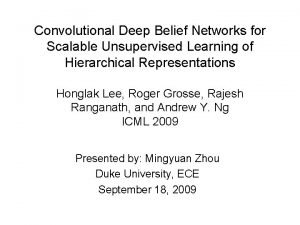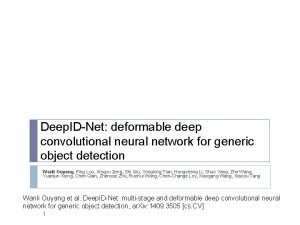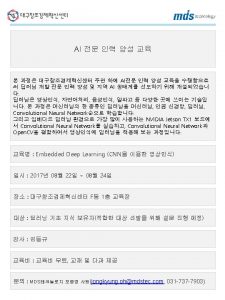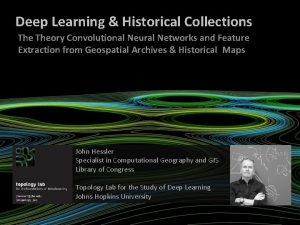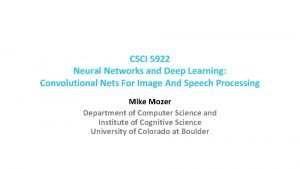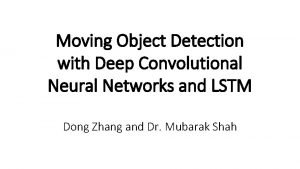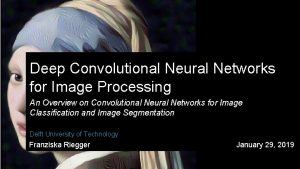Application of Deep Convolutional Neural Networks in Detecting














- Slides: 14

Application of Deep Convolutional Neural Networks in Detecting Severe Weather Events from Radar Reflectivity Images Rachel Under the supervision of Professor Fuqing Zhang and Professor Jia Li May 10, 2019

High-level Visual Signals in Weather Images Hook Echo, Velocity Couplet, The V-Notch, or “Flying Eagle”, The Debris Ball, etc. images credit to: https: //www. ustornadoes. com/2013/02/14/understanding-basic-tornadic-radar-signatures/

Motivation 1. Some of the human-designed visual features are hard to interpret. 2. Severe weather detection relies much on experience. 3. Deep learning has the ability to explore the underneath pattern of the images. Solution: Train a Deep Neural Network to detect severe weather events.

Regional Convolutional Neural Network (RCNN)

Part 1: Convolutional Neural Network (CNN) Function: output the visual features of the images. Method: Fix the first 10/24/30 layers of CNN and retrain with radar reflectivity images. Output: feature map

Part 2: Region Proposal Network (RPN) Function: select regions from the region candidates generate from the anchors and image features. Adjust anchor positions. Output: about 2000 positive+negative regions.

Part 3: Region of Interest (ROI) Pooling Function: further select regions of interest on region candidates. Adjust positions of the regions. Output: 128 positive+negative regions. Loss: sum of the cross entropy in RPN and ROI pooling stage.

Dataset 1. The historical radar reflection images from 2008 to 2017. 2. The severe weather records. 3. Model simulations of the year 2017. Targeting regions: 24 -50 N, 80 -106 W.

Positive and Negative Region Selection storm score: #(event in the bbox) reflectivity score: average radar reflectivity per pixel Positive regions: 1. Include severe weather events inside. (storm score > 0) 2. For the same event, we label the regions with higher radar reflectivity values. (reflectivity score > thres 0) Negative regions: 1. Far from severe weather events. (storm score = 0) 2. Not having very high radar reflectivity (reflectivity score < thres 1)

Example Red dot: event Green: Positive Blue: Negative Yellow: Neither

Result: Training

Result: Recall-Precision Curve Left: Fix 24 layers in VGG 16 and retrain the next. Right: Fix first 10 layers TITAN Baseline: Recall 0. 43, Precision 0. 21

Application: Severe Weather Prediction with Simulations

Conclusion We Propose a novel deep learning and computer vision framework to detect the severe weather events. The design of positive and negative regions for training the network automatically uses the large severe weather label dataset. Future work: validate on the simulation dataset, severe weather classification tasks.
 Deep forest: towards an alternative to deep neural networks
Deep forest: towards an alternative to deep neural networks Neural network ppt
Neural network ppt Convolutional neural networks
Convolutional neural networks Visualizing and understanding convolutional neural networks
Visualizing and understanding convolutional neural networks Csrmm
Csrmm Convolutional neural network alternatives
Convolutional neural network alternatives Convolutional neural networks for visual recognition
Convolutional neural networks for visual recognition Netinsights
Netinsights Leon gatys
Leon gatys Lmu cis
Lmu cis Convolutional deep belief networks
Convolutional deep belief networks Image super resolution using deep convolutional networks
Image super resolution using deep convolutional networks Deep convolutional networks
Deep convolutional networks Efficient processing of deep neural networks
Efficient processing of deep neural networks Mippers
Mippers










